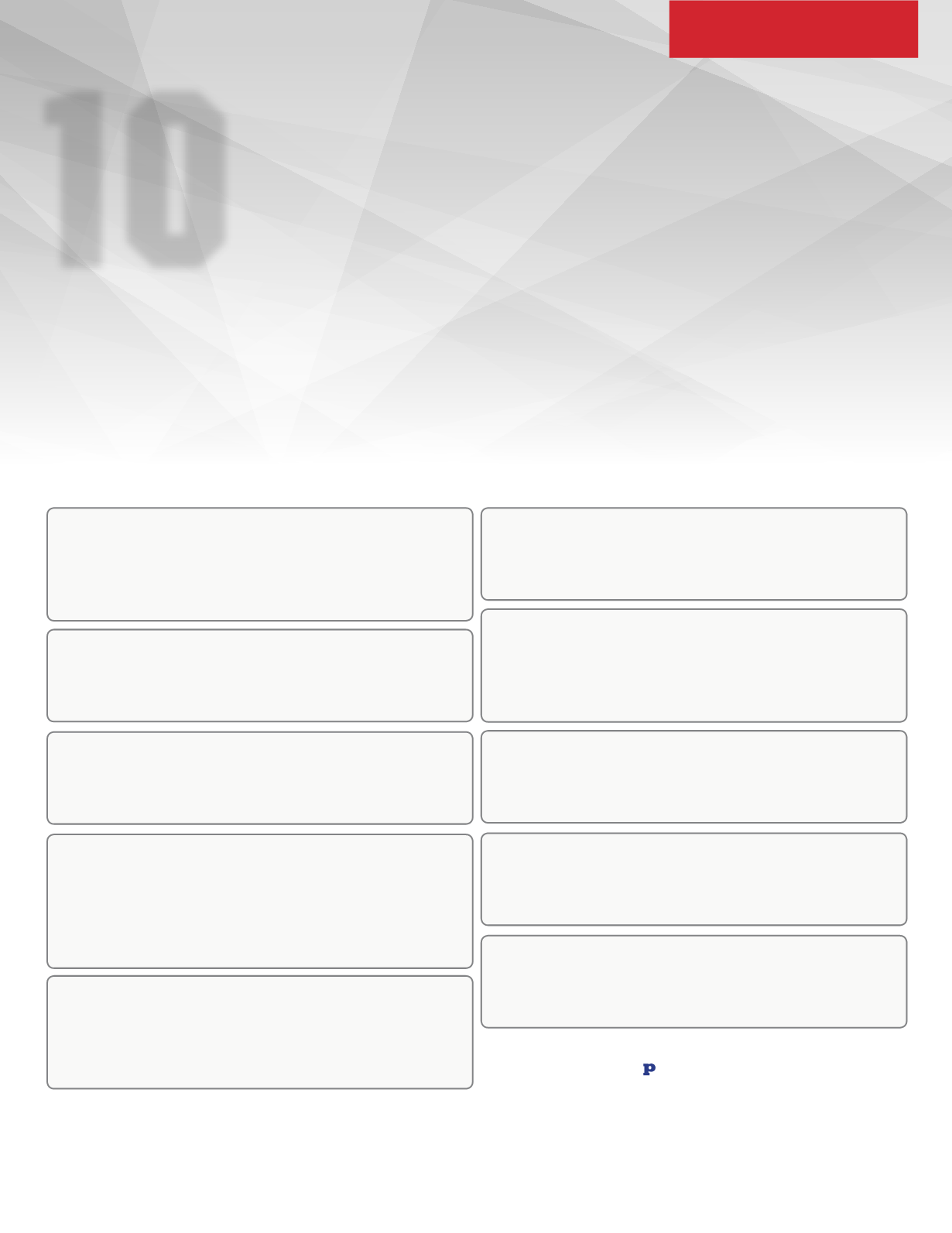
pace
>>
FALL 2013
23
1
Do not write down your passwords or leave them in view.
Many users get in trouble taping their passwords to a
laptop, desktop or monitor or having them on a post-it
around their workstation. If you absolutely have to write
down passwords, keep them in a secured place.
2
Perform required software updates for your operating
system and web browser. Systems that haven’t been
updated recently can have flaws that can be taken
advantage of by hackers.
3
Change passwords every three months or more. Choose
passwords with a combination of letters, numbers and
special characters, and develop a unique password for
each site and system that you access.
4
Carefully review your banking activity regularly. If you bank
online, review your account at least weekly. At a minimum,
check your statement every month. Keep an eye out for
small amounts wired out of your account—and don’t
assume it’s just a transaction you don’t remember. It could
be a test wire from a hacker.
5
Do not open unidentified links, ads or emails. Never click
on an email—or an attachment—that comes from an
unrecognized address, because hackers and spammers
send corrupt emails that send you to websites to steal your
information and infect your computer with viruses.
6
Make sure you have anti-virus software. Most systems come
with it pre-installed, but you may want to boost security
with more powerful software. A “sick” computer, or one
with rampant viruses, is more susceptible to hacking.
7
Do not provide private information on social network sites.
That means no email or phone. Most social media sites
include chat or message functions—so if someone you
don’t know wants to contact you for a legitimate reason,
they can message you through the site.
8
Do not provide sensitive information online. That means try
to avoid giving anyone your entire social-security number,
your user name and password to your business and
consumer bank and brokerage accounts.
9
For online banking, consider using a separate, dedicated
computer. Load up the system with powerful firewall, anti-
virus software and anti-spy/adware. Turn the computer off
completely when not in use to reduce the risk further.
Buy insurance. The statistics indicate that it’s just a matter
of time before your system gets hacked. But just $178/year
will help assure that up to $50,000 of your money can be
replaced if you do get hacked.
Be proactive in putting in the proper safeguards and make
sure you are insured.
CYBER THEFT OF DATA AND FUNDS HAS BECOME SO COMMONPLACE
that there isn’t a day you can’t read or hear in the media of a
company, bank or association that hasn’t been a victim. Here are three scary facts every organizational leader needs to be aware of:
• 90% of organizations will have their computer hacked, according to Jupiter Communications
• 63% of companies whose bank accounts are hacked are out of business within a year, according to Symantec
• $1 billion a year of money is being stolen by cyber thieves and that number is tripling every year, according to the FBI.
You can’t let this happen. Here’s how to fight back.
Marc Kramer is the co-founder of Commercial Deposit Insurance Agency, Inc. (CDIA) of Radnor, PA. CDIA has exclusive
access to AM Best “A”-rated insurance companies to provide insurance to corporate bank accounts against cyber theft.
Mr. Kramer can be reached at 484-881-1653 or
.
WAYS
to
SECURE
your
COMPUTERS
from
CYBER THEFT
By Marc Kramer
<< Tips
10
10


